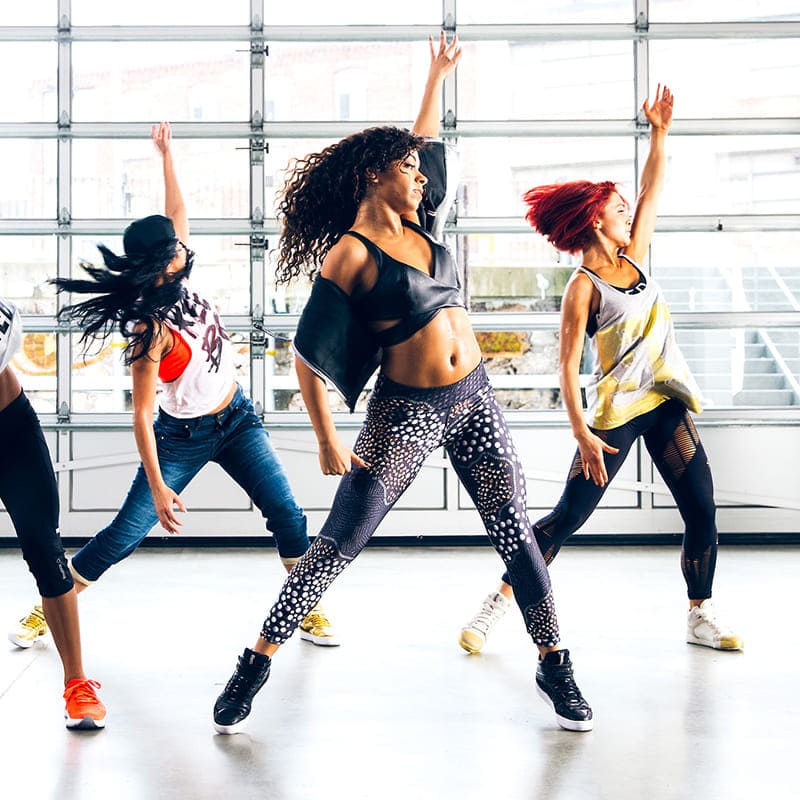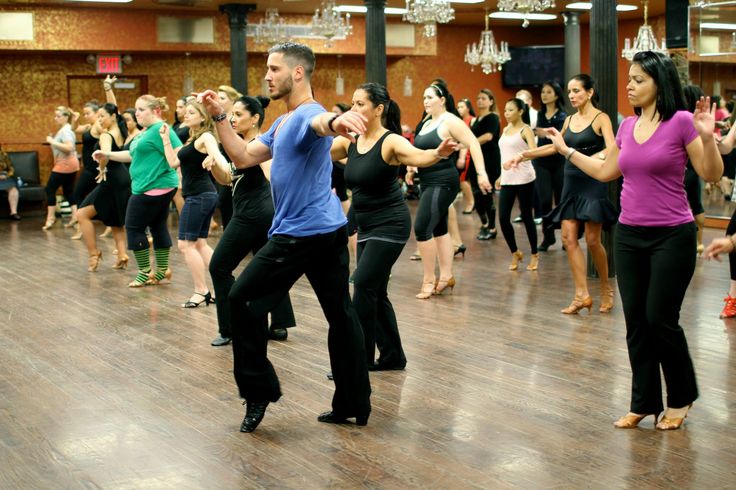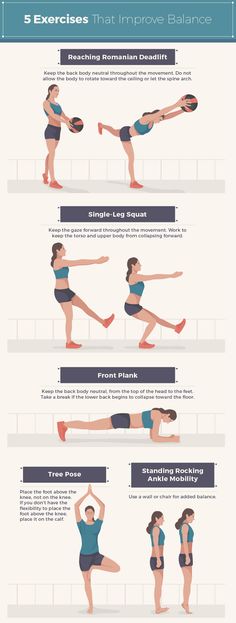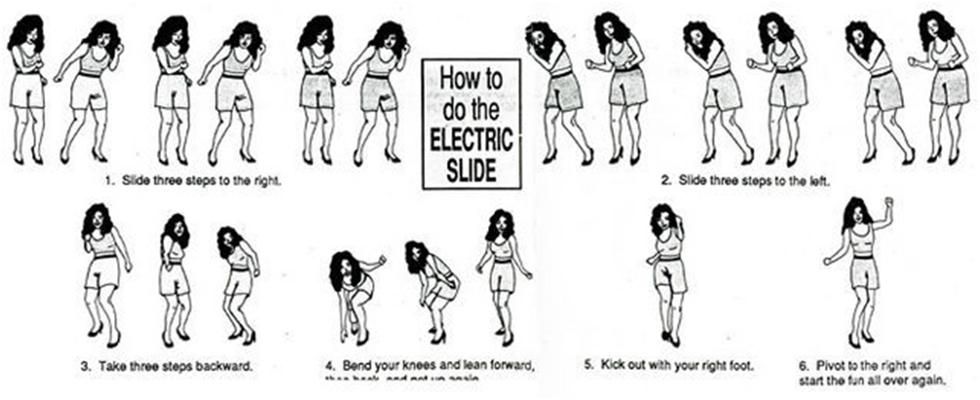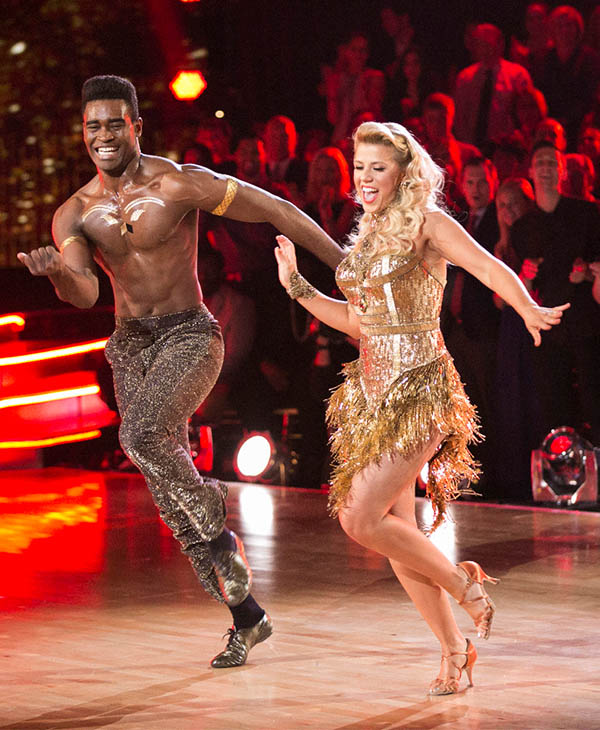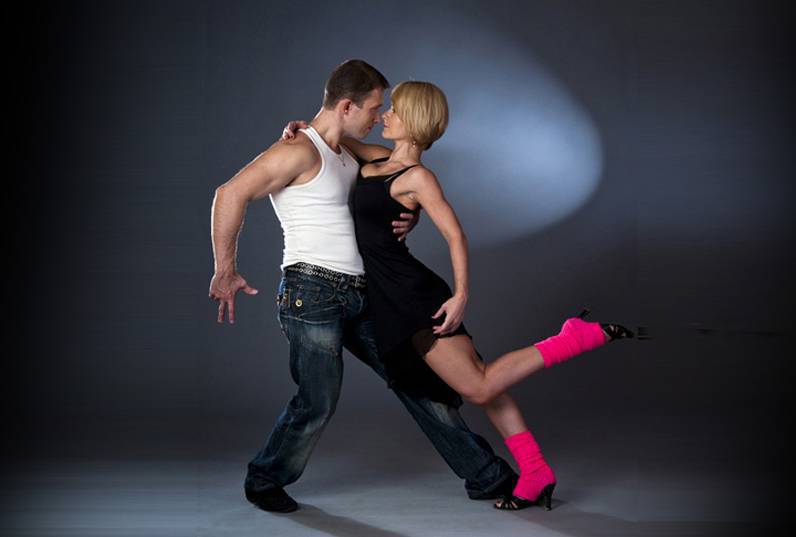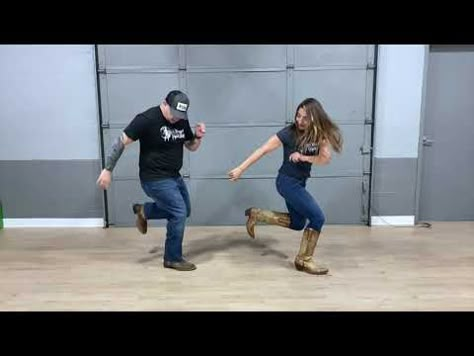How to do isolations dance
How to Practice Isolation for New Dancers
When you are starting out dancing, isolation is the first thing that challenges you. To move onto the next level, you have to climb this wall.
Although it is classified as basic in the dance literature, it is frustrating how difficult it can be. When you actually try it, your body does not go as smoothly as one expects.
Yet, isolation practice is necessary if you want to graduate novice dancer and start to look like an expert (see "Reasons why your dancing looks amateur and how to fix it").
The road to mastery is bumpy however. The first thing you would notice is the pain your muscle feels. Just like extensive stretching (as mentioned in "[The insider secrets to stretch and master split]" (http://dancesensei.com/dancing-tips-the-insider-secrets-to-stretch-and-master-split/)), the movement feels unconventional to your daily life. It is often the case that pain is the only noticeable indication that you are getting better.
To teach isolation is also the troublesome part. Luckily from interacting with countless dancers, I found a highly effective method of teaching for beginner people.
So this time I will introduce the way to practice isolation without failure in each of your body parts: neck, chest, and waist. It makes use of the natural flow of your physiology.
The technique of manipulating the body that you acquire through executing isolation skillfully is one of the most important forces to improve dance.
Key points to learn isolation
Because it becomes unintuitive and sometimes difficult depending on your practice method, it is better if you build proper knowledge and attitudes to acquire isolation skills properly before we go into the actual methods.
Never move it by force
One thing that is most unwelcoming in isolation practice is the strain.
As soon as force comes into play, your muscle becomes stiff, narrowing the range of motion. As a result, you will not be able to move as much as expected.
Instead of pushing your muscle as far out as possible, think of it like a puppet. You are being controlled by a single thread, and a part of your body is being pulled away gently.
Let's try to practice with relaxed sensation.
Experience the
first possibleThe first step towards mastering anything is to know your current limit. The process is more like accumulating incremental step rather than ending in one shot.
It is important to set an achievable goal every time, and experience what is physically possible with your body. You will also gain confidence in the meanwhile. Remember what you can do here.
This point is a nice segue to my next point.
Repeat or else forget
After experiencing how much isolation is possible with your body, you only need to reproduce the format every time and practice it over and over.
Depending on your body condition on that day, the practice outcome will vary inevitably. It is the memory of experience and confidence that helps you navigate the progress.
Your final destination is to be able to move your body parts in isolation without dedicated concentration. You should not need conscious effort to move. It should come out naturally to your body instead.
In this step, be careful not to leave a large interval between each practice. A little time of practice every day is always better than one big practice once a week. It is a common pitfall for beginners (see "[How much dance practice time do you need to become good?] (http://dancesensei.com/how-much-dance-practice-time-do-you-need-to-become-good/)").
Be sure to use mirrors for practice
In order to judge if you are doing it right, you need to be able to observe yourself. If there is no mirror available, you can always find a window reflection or take a photo snapshot of yourself. There is no excuse f this smartphone age.
Practicing isolation without confirmation is only pleasing yourself.
If you rely on your feeling without checking, you think isolation is done after the first day.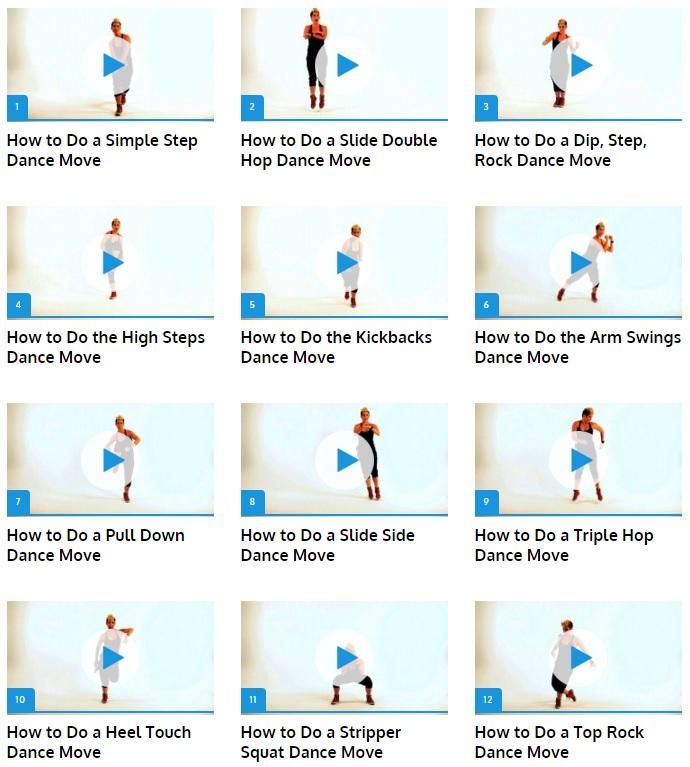 Mission accomplished. However, you have likely picked up some troublesome habits along the way.
Mission accomplished. However, you have likely picked up some troublesome habits along the way.
Yes, I understand that for some it is challenging to face your awkward self. But that is the reality. You are spending as much time anyway. Why not do it right from the first time?
If you are ready with these mindsets, let's dive into the practice methods.
Experience neck isolation
For the isolation of neck, bring your friend and set up a pair. Divide the role between the one who experience the movement potential and the other who supports.
One whose neck is moving
This person's job is easy. Simply lie down on a bed or table, and stick out just your head. The head is up in the air now (the other person should be holding).
You should let go of strain and relax fully. Trust the other person.
Supporter who moves the neck
Because the muscle around the neck is delicate, you who moves must handle the head with care. It is important to start this exercise in the relaxed stage.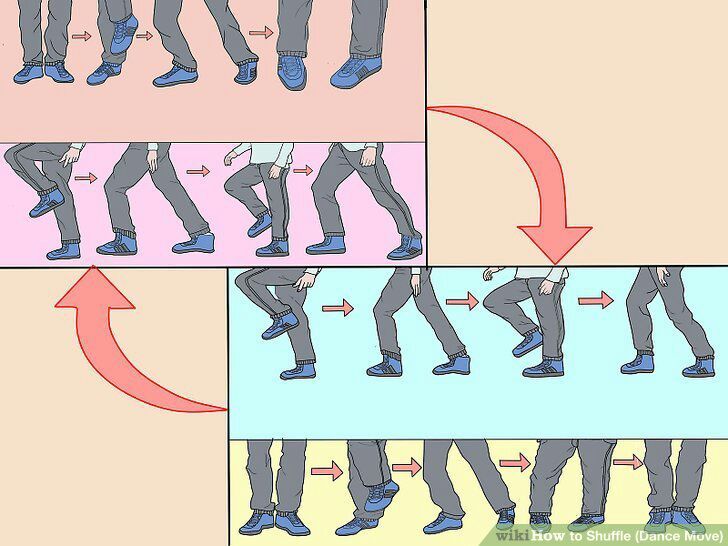 You can check it by shaking off the head lightly. If the head resists moving, it means that there is still room to loosen up.
You can check it by shaking off the head lightly. If the head resists moving, it means that there is still room to loosen up.
Once confirmed, slowly move the head to front and back. Shake it off again to put it back to the default stage. Then slide your head to left and right. It is not tilting but sliding. Your chin stays in the same angle sliding left and right.
4 directions in total: front and back, horizontally left and right. At each peak point, stop for a while to let the other person absorb the full experience.
This exercise helps in recognizing your physical limit and making a mental note of which part of your muscle is actually moving. It will benefit your own practice in the future.
Experience chest isolation
Being able to move your chest in isolation is important because it helps in showing musicality. This is where dancer grove comes from.
Back and Forth
Open your legs about 1.5-2 times the shoulder width, and slightly bend your knees.-Step-18.jpg/aid1640374-v4-728px-Shuffle-(Dance-Move)-Step-18.jpg) Stand with a hand on your waist. This form moves your chest more flexible.
Stand with a hand on your waist. This form moves your chest more flexible.
To move your chest forward, inhale deeply with your nose. While doing that, with your hands still attached to your waist, move your elbows as if you are touching them together behind your back.
That will form a shape of the chest sticking out. Repeat the step until your body will remember the shape.
To the contrary, exhale from your mouth with a moment to move your chest backward. Pull both of your elbows in front of the body this time, with hands still attached on the waist.
We will take an advantage of breathing to let your body soak in the sensation. Once you get used to the movement, you will be able to do it with a little concentration on your chest.
Left and Right
Not only front and back, but you also want to move it to the sideway.
The first step is the same; open your feet for 1.5 to 2 times the shoulder width, and lightly bend the knee. Relax.
As for hands, just hang them down on the side.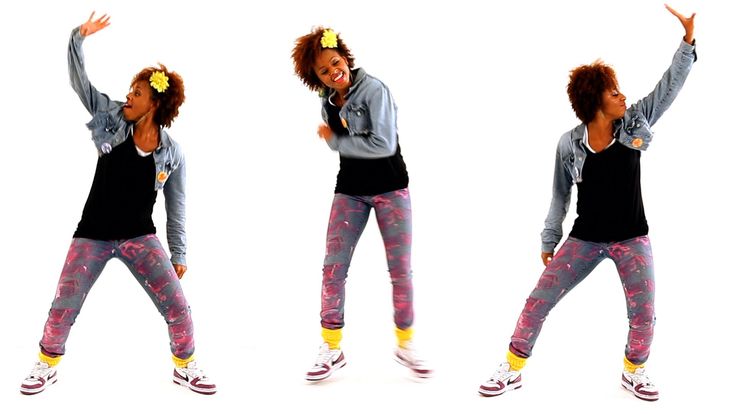 It is not much posing but more like regular standing without any tension.
It is not much posing but more like regular standing without any tension.
When ready, slowly move up both of your arms to the left. Then, your center of gravity naturally slides to the other direction (right) in order to keep up with the balance. That movement is the isolation. Repeat it on the right side.
As you get the hang of it, drop your arms and only move the chest part. It is important to keep your shoulder on the horizon. You will feel your stomach gently being pulled apart.
Experience waist isolation
Waist isolation is indispensable for making a dance step smoothly. You would want to control your waist zone at free will. To experience this, it is convenient to have a tool.
Prepare a round object that you can hold in your hands. It is better to have an object with some weight like your backpack or basketball.
Back and Forth
Again, open your legs about 1.5 to 2 times the shoulder width, knees bent slightly. Again, relax.
With that position, hold that object with both of your hands in front, and start rotating it around your body. Because of the relationship between the weight of the object and the range constraint of your body movement, your waist will try to make a space. It then starts to move back and forth naturally. That is the isolation.
Because of the relationship between the weight of the object and the range constraint of your body movement, your waist will try to make a space. It then starts to move back and forth naturally. That is the isolation.
Left and right
The procedure is the same as front and back. You will be rotating the object around your waist, and the waist will move in the other direction naturally.
The important thing in this waist exercise is to focus on the movement of your waist vertically and horizontally, rather than the rotation.
In any direction, be careful not to have your soles in the air either. Keep them attached to the floor all the time for the full experience.
Isolation for your everyday practice
Even though it is called the basic skills for any dancer, it can be so tedious and frustrating for beginners that they can just give up dancing.
The methods introduced today are for those people. Because it focuses on going along with your natural body movement, you should find it pain-free.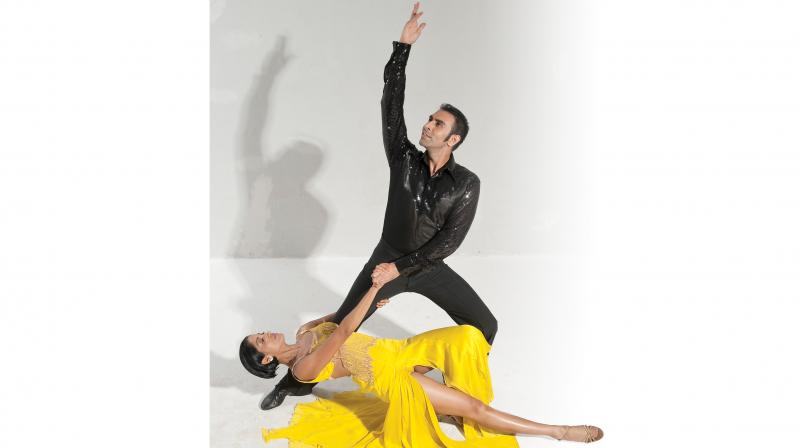
Please keep 2 things when practicing. Never force your way in and experience the possibility first. If you keep them in mind, you will surely improve.
Once you get over these initial hurdle, you can move onto gaining finer isolation and raising the range of motion of each part to the maximum.
Basic training always pays off in the long run. Without it, obtaining intermediate and advanced skills becomes almost impossible. Even 10 minutes is effective. Let's incorporate isolation into your everyday dance practice.
Sexy Body Isolations - Exercises At Your Desk • Dance Insanity
Dance InsanityDance Conditioning
Think you can only work on your latin dancing in the dance studio?? Think again! Now you can work on your body isolations even at your desk at work… or pretty much anywhere you have a chair! Say goodbye to those boring days at work! By the way, I’m rocking out my Clark Kent-inspired glasses. You like?
Exercise #1: Chest & Back Isolations
1 set of 10 reps(1 rep = forward & back)
Benefits: Upper & Lower Back, Chest & Abs
Tips:
1.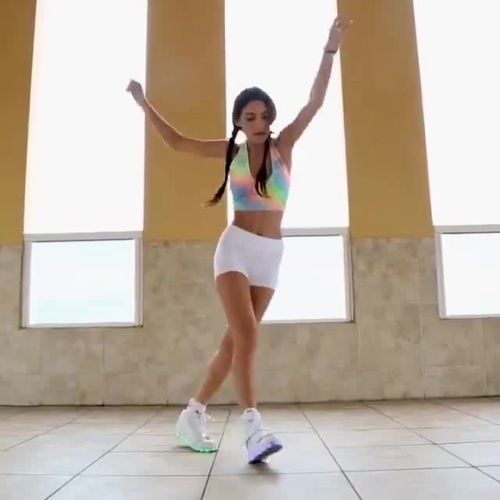 Sit on the front edge of the chair with your feet planted on the floor.
Sit on the front edge of the chair with your feet planted on the floor.
2. Keep a committed relationship between your butt cheeks and the chair. 😉
3. Squeeze your abs and back muscles to initiate each movement forward and back.
4. Use the edge of the chair to get further into the isolations.
Exercise #2: Ribcage Isolations
2 sets of 10 reps
(1 rep = full circle)
1 set circling to the left and 1 set circling to the right.
Benefits: All the muscles around your ribcage.
Tips:
1. Plant your butt firmly on the chair and don’t let your butt come off the chair while doing the circles.
2. Squeeze your abs and back muscles to create the circular actions.
3. Keep the circles fluid by imagining there is a small hula hoop around your chest and you are keeping contact with the hula as you circle around.
Exercise #3: Side Abs & Back Isolations
1 set of 10 reps
(1 rep = left + right)
Benefits: Upper & Lower Back, Chest & Abs
Tips:
1.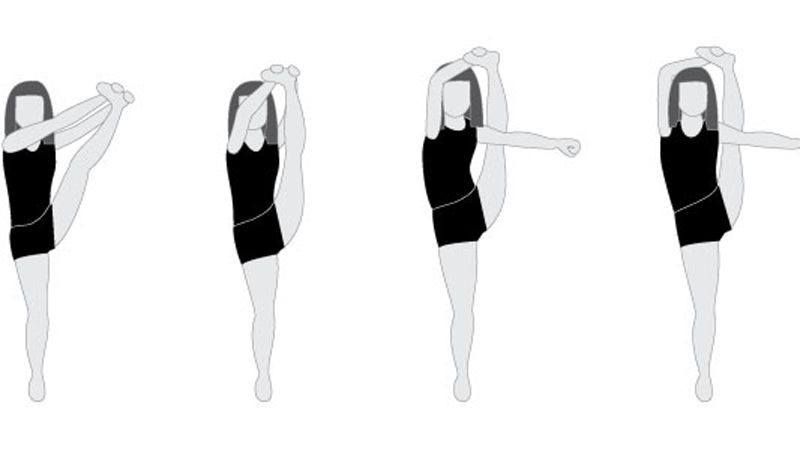 Sit on the front edge of the chair with a tall posture.
Sit on the front edge of the chair with a tall posture.
2. Keep the side to side movements small and focus on using the side abs.
3. Try to keep shoulders parallel to the floor.
Exercise #4: Waist Slimmer
1 set of 10 reps
(1 rep = twist right and left)
Benefits: Muscles around your waist and lower back.
Tips:
1. Keep your butt cheeks kissing the chair the whole time.
2. Maintain a tall posture by stretching your torso up away from your hips. (i.e.: No hunchbacks allowed)
3. Rotate your torso first, then reach for the back of the chair to get more twist action. (but only as far as it is comfortable)
4. Keep your abs tight.
Exercise #5: Sexy Hip Rotations
1 set of 10 reps
(1 rep = twist right and left)
Benefits: Lower Back, Glutes and Abs
Tips:
1. Keep your Shoulders parallel to the edge of the chair.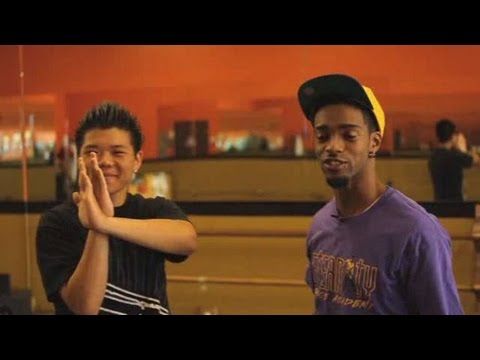
2. Squeeze your abs and back muscles to initiate each movement forward and back.
3. Engage your glutes when you get to the end of each Rotation.
TAGS: dance drills popular sexy office Stetching
6 Fixes for Rescuing a Dance
Laura Riva, Canada
Original: http://www.danceplace.com/grapevine/6-fixes-for-rescuing-a- dance/
There are a number of bad habits or faults on the dance floor. With some there is nothing to be done during the dance - for example, with poor hygiene. Sometimes our main concern is to keep ourselves safe while dancing with a dangerous partner. However, we have compiled here a list of the most common dance floor complaints and ways to make dancing more enjoyable.
1. Does not count. Well, here's "1".
Feeling: "Beat. There he is. How can you not hear him? Only I can hear him."
Score: Yes, that's probably the only thing you're hearing at the moment... But unless you have superpowers, you won't teach your partner to hear a beat in the next 3 minutes.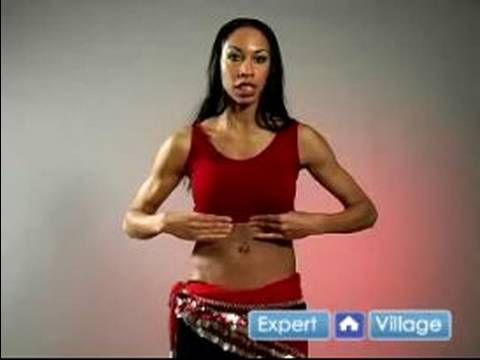 If the partner is slightly out of rhythm, then you can correct this a little by slowing down or speeding up your own step - and thereby returning the partner to the beat. If he really doesn't hear the beat and rhythm at all, then you don't have much of an opportunity to fix it somehow.
If the partner is slightly out of rhythm, then you can correct this a little by slowing down or speeding up your own step - and thereby returning the partner to the beat. If he really doesn't hear the beat and rhythm at all, then you don't have much of an opportunity to fix it somehow.
How to fix it:
Strategy 1 : Find something in the music other than the beat that you can dance to. Interpret something else in the music.
- If your partner doesn't hit the beat, try slowing down or adding interesting accents to the highlights of the track.
- If your partner can't hear the beat at all, use the moments you get out of the spins and open to the side to hit the beat.
 Consider a beat-deaf partner as an opportunity to practice the instant lead-follow response. Sometimes such a partner can quickly pick up your sensitive connection and use it in a new way to compensate for the lack of a discernible bit.
Consider a beat-deaf partner as an opportunity to practice the instant lead-follow response. Sometimes such a partner can quickly pick up your sensitive connection and use it in a new way to compensate for the lack of a discernible bit.
2a. Unruly partner. "I didn't lead it."
Feeling: "Hey. You're already there. How did you get there? I wouldn't recommend doing that. Do you think that's style? No, I didn't lead you into style."
Rating: Well, she will still continue to do what she wants. She may even think that she is being led. Perhaps someone taught her that from a given entry into a movement, there is only such an exit. Whatever the reason, it will be easier to adapt to your partner than to fight her and try to subdue her.
How to correct:
If she goes somewhere, let her go. Follow her. Does she move herself? Excellent. Challenge yourself and turn it into something creative.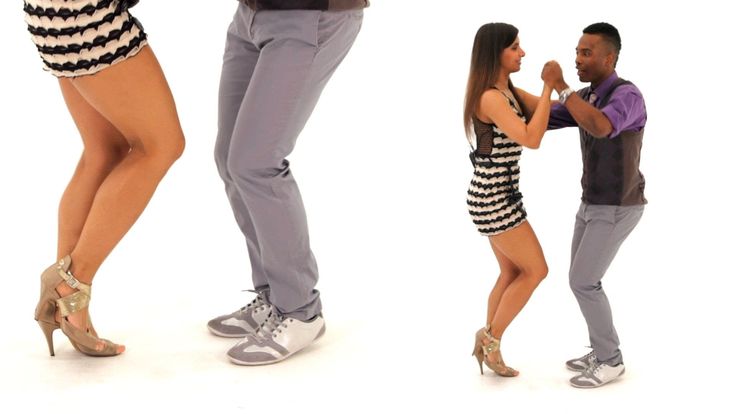 She definitely had an idea. Who knows? It can open up a whole new movement for you that you never thought of before.
She definitely had an idea. Who knows? It can open up a whole new movement for you that you never thought of before.
2b. Show off partner. "Hey, I'm here too!" . , what I feel".
Rating: If your partner is showing off, then you can easily afford to do the same. Be funny, goofy, sexy, or completely ethereal. Choose.
How to fix:
If you match his energy, it can return his attention to you. Sometimes this will work and he will see that he has a partner who wants to share the spotlight with him. If not, just kill it. Dance the way you feel and let that person do their own dance next to you.
3. Does not fit into musical accents. "Don't you hear this beautiful song?"
Feel: "Oh my god. I love this song so much. It's awesome. And you don't pay any attention to it. Ups and downs... accents... they just... pass by ! It's like a river full of fish, and I'm sitting with a fishing rod, but someone forgot to put the bait on the hook.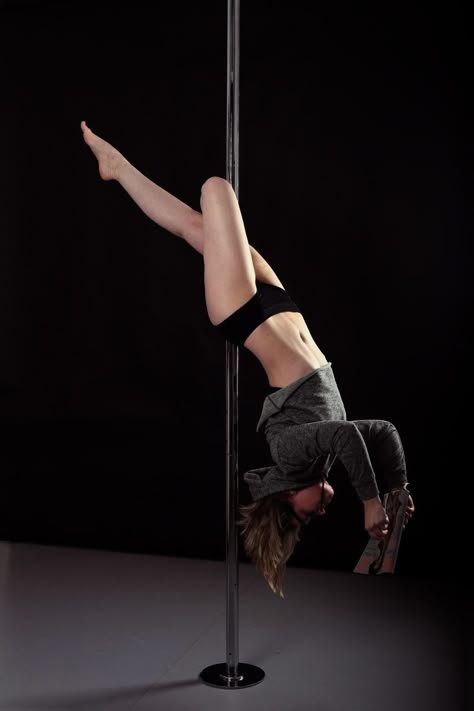 "
"
Score: As with missing the beat, it's unlikely you'll be able to fix this situation for the next song. But that doesn't mean you don't have the opportunity to express your own musicality.
How to fix:
Other than super close hugs, you most likely have a free body part. Use her. Free leg? Make a flick. Hand? Use it somehow. And what about the head? And the wave with the body? Swing or slide your foot? Shoulder work? Hips? The possibilities are endless. Stop focusing on your partner's shortcomings and focus on what you can do yourself to better feel the music.
4. Limited repertoire. "Are we doing it again ?"
Feeling: "OK. I tried to do something new. You don't understand what I'm getting at at all. I'm so bored doing all these basic moves."
or : "Arrr. Can you take me to do anything else? We've done the same move about 20 times already. I want something new.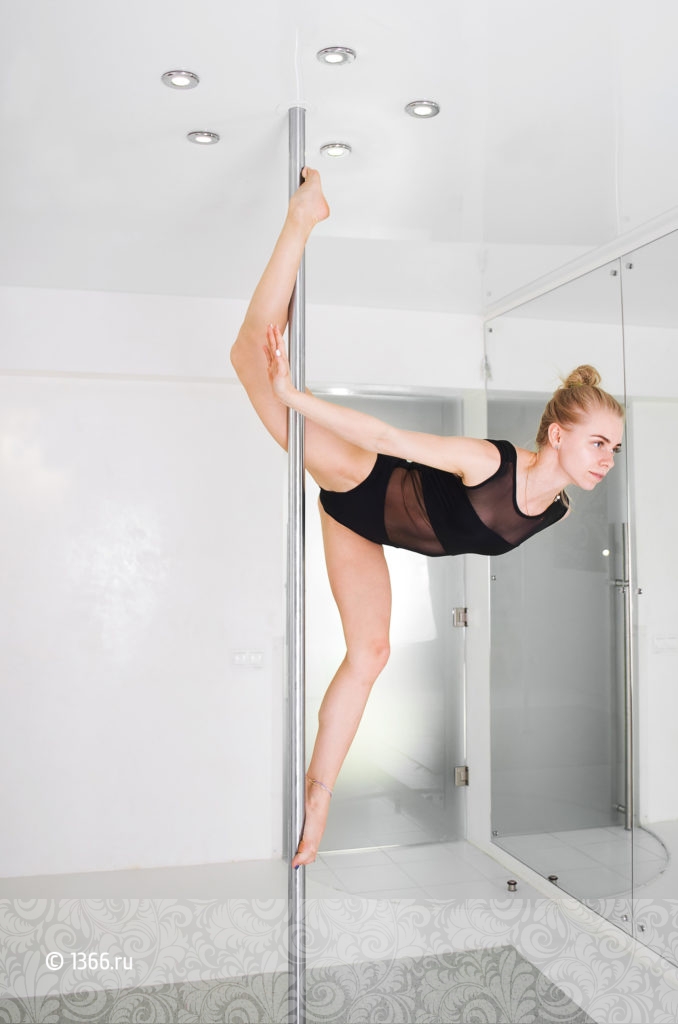 And harder."
And harder."
Rating: Patience will be your virtue. They won't learn anything new right now at a party. In addition, these are often the people who need the most support and encouragement, because they are inexperienced beginners and try their best to do everything right.
How to fix it:
Take the base and add a twist to it. Partners, try to add style. Play with isolation. Look for opportunities to express yourself in simple movements. Practice the technique. Partners, find new ways to create your movements while respecting your partner's abilities. You can add a twist or footwork to yourself. Work on technique and frame. These dancers can make great practice partners if you give them the opportunity.
5. Bad connection. Part 1: Where is my partner?
Feeling: "This dancer is invisible. It's not the feeling of "as light as a marshmallow connection", not that rosy feeling that everything around is made of light and beauty.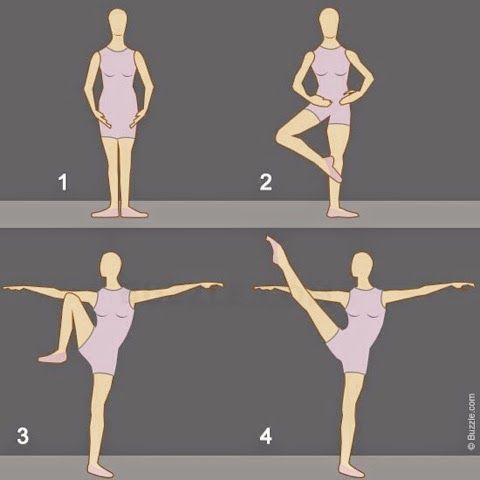 On the contrary, there is nothing. Not at all. No connection. I I know this because I don't feel anything from them, and they don't respond to any direction I give. If I hadn't seen them, I would have thought I was dancing with emptiness."
On the contrary, there is nothing. Not at all. No connection. I I know this because I don't feel anything from them, and they don't respond to any direction I give. If I hadn't seen them, I would have thought I was dancing with emptiness."
Rating: Yes, connection (more precisely its absence) is a problem. Create more contact!
How to fix:
Try a closer hug or position with body contact. The more points of contact you can establish, the more you will be able to do something with this type of partner. Make your frame tighter. If necessary, leave your habitual notion of "dancing" and allow yourself to simply move with the person.
6. Bad connection. Part 2: TOO MUCH PARTNER!!!
Feel: "Too much power! You don't have to put in that much effort to make this move. Seriously. Wow, damn it!"
Rating: The main need is to make sure that you are not dragged around the dance floor. Try to soften what is happening.
Try to soften what is happening.
Correction:
If you are a partner, slow down. This will help calm your partner. If she also makes a gag, use the tips from point 2. Close hugs will also help soften your partner. Both for the partner and for the partner it is necessary to relax the muscles of the hands (biceps and brachioradialis (forearm)) . Stay relaxed, but keep your body. Do not try to lead or follow at full strength, this can be dangerous. Soften the dance by reducing the force of the contact. If necessary, dance as you see fit, and do not perform too hard, abrupt and dangerous movements.
Remember:
Your partner is also a person. And you may even be one of his favorite partners. Be kind. Some of these dancers may try very hard to correct their shortcomings. Some of them are still beginners. Some dance just for fun and partying - that can be the same, whether you agree with it or not. And some may be overwhelmed by the fact that they are not good enough yet.
Dancing with these guys won't make your night, but that doesn't mean that you won't make them, which is also a kind of special feeling. As a teacher, I deal with this all the time. These dances will always be a part of the social dance world, and learning how to give and receive them can be the key to enjoying social dancing on an ongoing basis - instead of feeling frustrated and fed up.
Keep dancing. Revel in amazing dancing, enjoy good dancing, and learn to give other people the best dancing as possible!
______________________________________________
I saw in the comments a problem about the emotional component, which the author of the article did not consider. I'll try to write about it separately soon ;)
ARCH [arch] - arch, back deflection of the torso.
ALLONGE, ARRONDIE [alonge, arondi] - the position of a rounded or elongated arm.
ASSEMBLE [assembly] - a jump from one leg to two is performed with the legs abducted in a given direction and collecting the legs during the jump together.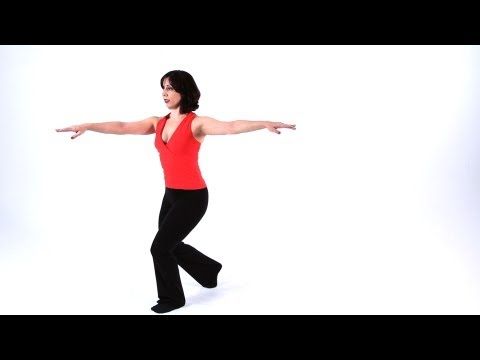
BODY ROLL [body roll] - a group of torso tilts associated with the alternate movement of the center of the body in the lateral or frontal plane (synonymous with 'wave').
BOUNCE [bounce] - springboard swaying up and down, mainly occurs either due to flexion and extension of the knees, or pulsating tilts of the torso.
BATTEMENT TENDU [batman tandu] - the movement of the leg, which is retracted to the toe forward, backward or to the side with a sliding motion. In modern jazz dance, it is also performed in parallel positions.
BRUCH [brush] - sliding or smearing the whole foot on the floor before opening the leg into the air or when closing into position.
CONTRACTION [contraction] - compression, reduction of the volume of the body and rounding of the spine, begins in the center of the pelvis, gradually capturing the entire spine, performed on exhalation.
CORKSCREW TURN - 'corkscrew' turns, in which the performer raises or lowers the level of rotation.
COUPE [coupe] - a quick substitution of one leg for another, serving as an impetus for a jump or other movement.
CURVE [curf] - bending the upper part of the spine (to the 'solar plexus') forward or to the side.
DEEP BODY BEND [deep body band] - lean the torso forward below 90°, keeping the straight line of the torso and arms.
DEEP CONTRACTION [deep contraction] - a strong compression in the center of the body, in which all joints participate, i.e. this movement includes arms, legs and head.
DEGAGE [degage] - transferring the weight of the body from one leg to another in the second position (right, left) and in the fourth position of the legs (forward, backward), can be performed both with demi-plie and with outstretched legs. Synonym for shift.
DEMI-PLIE [demi-plie] - semi-squatting, in which the heels do not come off the floor.
DEMIROND [demi rond] - a semicircle with the toe of the foot on the floor forward and to the side, or back and to the side.
DROP [drop] - falling of a relaxed torso forward or to the side.
EN DEDANS [an dedan] - the direction of movement or turn towards oneself, inward.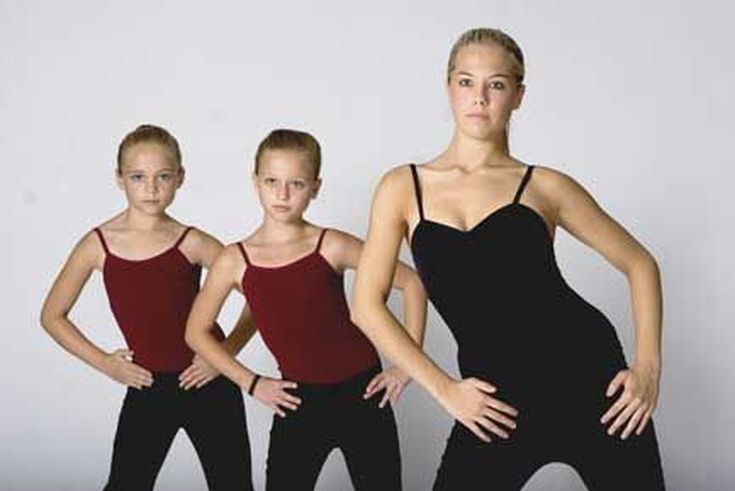
EN DEHORS [an deor] - the direction of movement or turn from oneself or outward.
ECARTE [ekarte] - a pose of classical dance (a la seconde), turned diagonally forward or backward, the body is slightly deviated from the raised leg.
EPAULMENT [epolman] - the position of the dancer, turned in 3/4 in bar 8 or bar 2; differs epaulement croise (closed) and epaulement efface (erased, open)
FLAT BACK [flat back] - tilt of the torso forward, to the side (by 90 °), back with a straight back, without bending the torso.
FLAT STEP [flat step] - a step in which the entire foot is simultaneously placed on the floor.
FLEX [flex] - reduced foot, hand or knees.
FLIK [flick] - a foot stroke on the floor to the supporting leg.
FOUETTE [fuette] - a turn technique in which the performer's body turns to a leg fixed in a certain position (on the floor or in the air).
FROG-POSITION [frog-position] - a sitting position in which the legs bent at the knees touch each other with the feet, the knees should be maximally opened to the sides,
GLISSADE [glissade] - ground sliding jump without leaving the floor moving right-left or forward-backward.
GRAND BATTEMENT [grand batman] - a leg throw 90 ° and higher forward, backward or to the side.
GRAND JETE [grand jet] - jump from one foot to the other moving forward, backward or sideways. The legs open up to the maximum and take the position of 'split' in the air.
GRAND PLIE [gran plie] - full squat.
HIGH RELEASE [high release] - high expansion, a movement consisting of lifting the chest with a slight backward bend.
HINGE [hinch] - the position of the dancer, in which the straight, without bends, the torso leans back to the maximum distance, the knees are bent, the feet are on half-toes,
HIP LIFT [hip lift] - lifting the hip up.
NOR [hop] - step-jump, 'working' leg is usually in the 'at the knee' position.
JACK KNIFE [jackknife] - body position in which the torso leans forward, back is straight, resting on hands, knees extended, legs in the second parallel position, heels do not come off the floor.
JAZZ HAND [jazz hand] - the position of the hand, in which the fingers are tense and spread apart.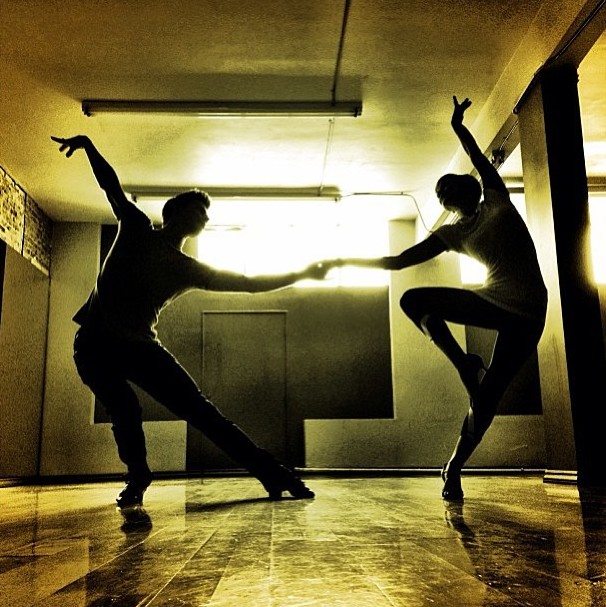
JELLY ROLL [jelly roll] - a pelvis movement, consisting of a small muscle contraction with a simultaneous slight turn of the pelvis to the right and left (synonymous with a pelvis shake.)
JERK-POSITION [jerk position] - a position of the hands in which the elbows are retracted behind the chest, the forearms are parallel to the floor.
JUMP [jump] - jump on two legs.
KICK [kick] - throwing the leg forward or to the side by 45 ° or 90 ° through the developpe take-out,
LAY OUT [lay out] - a position in which the leg is open at 90° to the side or back, and the torso form one straight line.
LEAP [liip] - a jump from one foot to another moving forward or to the side.
LOCOMOTOR [locomotor] - a circular movement of arms bent at the elbows along the torso.
LOW BACK [low back] - rounding of the spine in the lumbar-thoracic region.
PAS BALANCE [pa balance] - pa, consisting of a combination of tombe and pas de poigree. It is performed with the advancement from side to side, less often - back and forth.
PAS CHASSE [pa chasse] - an auxiliary jump with advancement in all directions, during which one leg 'catches up' with the other at the highest point of the jump.
PAS DE BOURREE [pas de bourree] - an auxiliary dance step, consisting of alternating steps from one foot to the other, ending in demi-plle. Synonym for step pas de bourree. In modern jazz dance, the position of sur le cou-de-pied is not fixed during pas de bourree.
PAS DE CHAT [pas de sha] - a jump, a cat's limiting jump. Legs bent at the knees are thrown back.
PAS FAILLJ [pa fail] - a connecting step, consisting of passing the free leg through the passing demlplie in I position forward or backward, then the weight of the body is transferred to the leg with some deviation from the vertical axis.
PASSE [passe] - a passing movement, which is a link when moving the leg from one position to another, can be performed in the first position on the floor (passepar terre), or at 45 ° or 90 °.
PIQUE [peak] - a light injection with the fingertips of the 'working' leg on the floor and lifting the leg to a given height.
PIROUTTE [pirouette] - rotation of the performer on one leg en dehors or en dedans, the second leg in the sur le cou-de-pied position.
PLIE RELEVE [plie releve] - the position of the legs on half-toes with bent knees.
POINT [point] - the extended position of the foot.
PRANCE [price] - movement for the development of foot mobility, consisting of a quick change of position 'half-lalse' and point.
PREPARATION [preparation] - a preparatory movement performed before the start of the exercise.
PRESS-POSITION [press position] - the position of the hands, in which the arms bent at the elbows with the palms touch the hips in front or side.
RELEASE [release] - expansion of the volume of the body, which occurs on inspiration.
RELEVE [releve] - lifting on half-fingers.
RENVERSE [ranverse] - a sharp bending of the body, mainly from the pose of atitude croise, accompanied by pas de bouree en tournant.
ROLL DOWN [roll down] - a downward-forward spiral tilt, starting from the head.
ROLL UP [roll an] - a reverse movement associated with a gradual unwinding and straightening of the torso to its original position.
ROND DE JAM BE PAR TERRE [ron de jamb par terre] - a circle with an outstretched leg, touching the floor with your fingers.
ROVD DE JAM BE EN L 'AIR [ron de jamb anler] - circular movement of the lower leg (ankle) with a fixed hip, set aside to a height of 45 ° or 90°.
SAUTE [saute] - classical dance jump from two legs to two legs in I, II, IV and V positions.
SHIMMI [shimmy] - a spiral, twisting movement of the pelvis to the right and left,
SIDE STRETCH [side stretch] - lateral stretching of the torso, tilting the torso to the right or left.
SISSON OUVERTE [sisson overt] - a jump with flying forward, backward or to the side, upon landing one leg remains open in the air at a given height or in a given position.
SOUTENU EN TQURNANT [sutenu an turnan] - turn on two legs, starting with retracting the 'working* leg into the fifth position.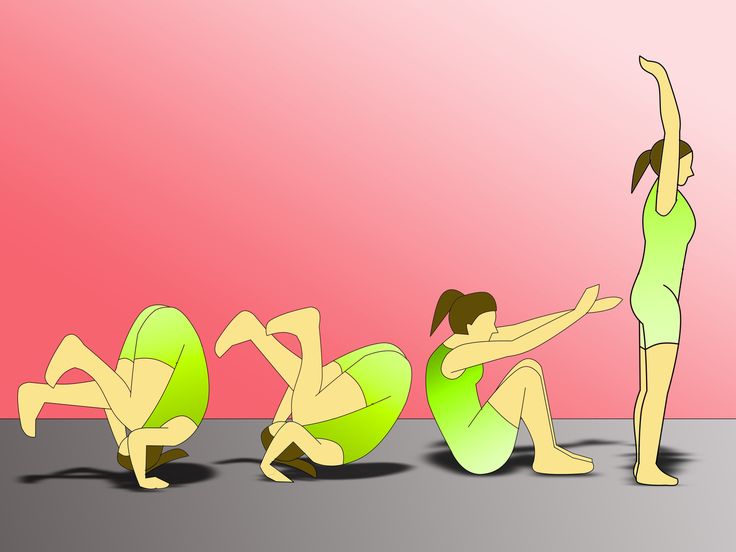
SQUARE [square] - four steps in a square: forward-to-side-back-to-side.
STEP BALL CHANGE [step ball change] - a connecting step, consisting of a step to the side or forward and two steps on the half-toes (synonymous with step pa de hour its
SUNDARI [zundari] - head movement, which consists in shifting the cervical vertebrae to the right and left and back and forth
SURLE COU-DE-PIED [sur le cou-de-pied] - the position of the extended foot of the 'working' leg on the ankle of the supporting leg in front or behind
SWING - swinging with any part of the body (arm, leg, head, torso) in a special jazz rhythm.
THRUST [frast] - a sharp jerk of the chest or pelvis forward, sideways or backward.
TILT [tilt] - angle, posture at which the torso deviates to the side or forward from the vertical position, the 'working' leg can be open in the opposite direction by 90 ° and more.
TOMBE [tombe] - fall, transfer of the weight of the body to the open leg forward, to the side or back on the demi-plie,
TOUCH - side step or step on the half-toes without transferring the weight of the body.
